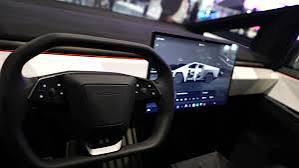Tesla's Full Self-Driving Under NHTSA Investigation After Fatal Incident
Tesla's Full Self-Driving (FSD) feature is facing intense scrutiny after a fatal pedestrian collision. The National Highway Traffic Safety Administration (NHTSA) has launched a safety investigation into the incident, raising concerns about the technology’s reliability and safety. This investigation is particularly significant as it involves a Tesla vehicle operating under the FSD system, which is meant to autonomously control a car's driving functions.
The fatal incident occurred when a Tesla, traveling in Full Self-Driving mode, struck and killed a pedestrian. Though the driver was present in the vehicle at the time of the collision, reports suggest that the car’s systems were actively engaged in the driving process. This has prompted the NHTSA to probe whether Tesla’s FSD system is functioning properly and if it poses an ongoing risk to public safety.
The NHTSA investigation is not the first time Tesla’s automated driving technology has come under fire. Over the past few years, there have been multiple incidents where Tesla vehicles, operating under varying levels of automation, were involved in crashes. While Tesla has continuously asserted that its FSD technology is designed to enhance driver safety, critics argue that it may not be as reliable as the company claims. The NHTSA’s latest probe could lead to further regulatory actions or changes to how Tesla implements its FSD features in the future.
The investigation centers on the possibility that the FSD system may not be responding appropriately to critical situations, like a pedestrian crossing the road. Tesla has made several updates to its FSD software, but the latest incident raises doubts about its readiness for full deployment. The NHTSA’s safety inquiry will evaluate whether the system failed to identify and react to the pedestrian in time to prevent the collision.
As the investigation progresses, Tesla’s future in the self-driving vehicle market could hinge on the findings. If the NHTSA uncovers significant flaws or fails to find adequate safety measures, the automaker may face significant regulatory pressure, potential recalls, or changes in how it markets and develops its self-driving technology. This incident underscores the growing tension between the rapid advancement of autonomous vehicles and the need for robust safety measures to protect both drivers and pedestrians.


